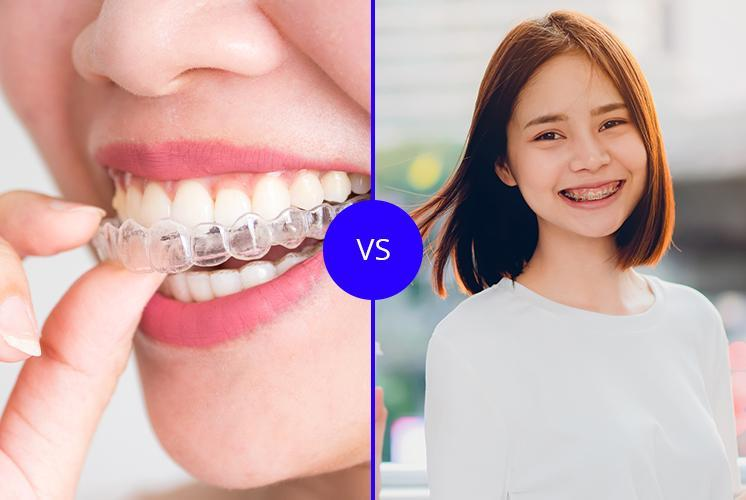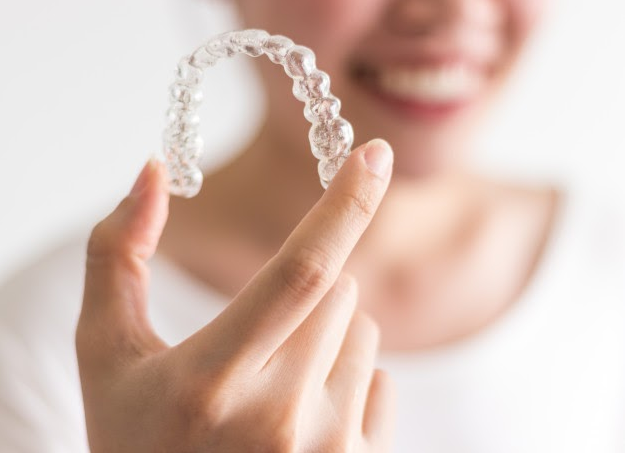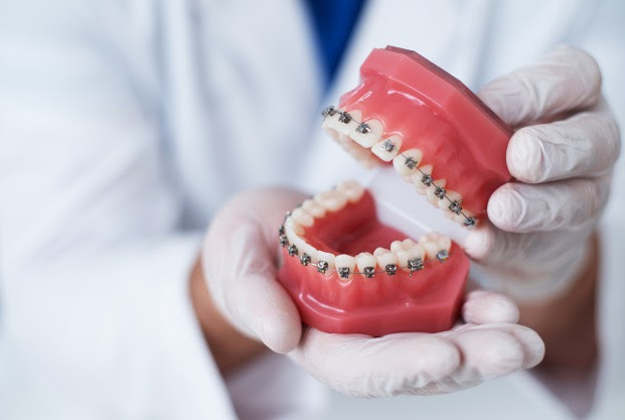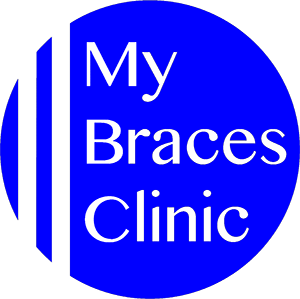
Every patient has a unique preference for comfort and style, and a unique set of teeth that are best treated through different braces techniques – so it is best to know your options before you choose what braces to get for the next one to two years! You may have heard of the Invisalign braces treatment, which looks like a regular, clear plastic retainer to wear over your teeth – but there is so much more to find out about how it works, how long it takes to align your teeth, and how it compares to normal coloured-braces. To give you a headstart on understanding your treatment options, we share the difference between Invisalign and traditional braces, and let you know which is best for you!
What is Invisalign?
Invisalign braces are clear plastic aligners that are made from BPA-free plastic that you can easily wear over your teeth. The Invisalign system uses a computerised advanced 3D-modelling technology to scan and make a digital blueprint of the patient’s teeth, and then uses this digital impression to create the clear plastic aligners for the patient to wear. While the Invisalign may seem like a modern braces treatment, it has actually been around since the 1980s and is trusted by orthodontists, dentists and patients around the world! Patients who choose Invisalign tend to favour the clear look of the braces, making it seem like you’re not wearing braces at all!

How does Invisalign treatment work?
Invisalign treatments take about 12 – 24 months on average, but the length of treatment may vary according to case complexity. While Invisalign braces can be easily removed from your teeth, you have to keep them on for at least 22 hours a day in order for your treatment to work effectively – or else you may not see any progress on your teeth. Each set of Invisalign aligners takes you one step closer to a straighter smile. The number of aligners it takes to get your smile straight varies depending on case complexity. Invisalign appointments are much fewer and further spaced out compared to fixed braces. You will take home several aligners, and change to new (and tighter) aligners in average every 7 days.
Invisalign uses a ‘pushing mechanism’ to move teeth into position and are great at creating space to avoid the need for extractions.
What are traditional braces?
Traditional braces are probably what you’re more familiar with and see most commonly on your friends or family members’ teeth in the past. These braces have metal brackets fixed permanently on your teeth (until the end of your treatment) and are connected by a firm archwire, held stably in place with coloured elastic bands. Oftentimes, traditional braces treatment involves extracting two or four of your molar teeth, in order to make space for your teeth to shift into the correct position.

How do traditional braces work?
Traditional braces take a similar length of time for treatment, which is an average of 16 – 24 months, depending on the complexity of each case as well. Patients have to come back for regular monthly appointments to make sure that their braces are in good shape, and to switch up the wires in order to straighten the teeth progressively. You will not be able to remove your traditional braces until the end of your treatment, so you will have to get used to a bumpy set of metal fixtures on your teeth! Cleaning of fixed braces requires extra tools to assist in getting food and bacteria out from under the braces.
Which is better, Invisalign or traditional braces?
In terms of style, certain groups of people, like adults and some teens, may prefer Invisalign treatment because it looks invisible on your teeth and less physical appointment due to hectic schedule. On the other hand, colourful braces are also fun for children, teens and adults who look forward to changing the colour of their bands every month – donning fresh new styles on their teeth.
Invisalign braces make it easier for you to clean your teeth because they can be removed and put back on. Patients have to take off their Invisalign to eat both meals and snacks, and food does not get so easily caught in your teeth compared to traditional braces. However, patients still must continue to take good care of their teeth otherwise food will get trapped under their aligners all day, which is definitely no good for teeth! While it may seem attractive that Invisalign braces can be taken off your teeth, you still do have to keep it on for the most part of your day in order for your treatment to progress well!
Traditional fixed braces are permanently stuck onto your teeth and you will not need to remember to wear them, but your oral hygiene skills have to be upgraded and you have to avoid hard, crunchy foods to prevent breakages. Both Invisalign and traditional braces take effort to maintain, each in different ways.
Even with all these considerations in mind, you should rely on your orthodontist to guide you on what is suitable for you! Ask your orthodontist which treatments are available to you and whether or not they are effective for your unique case. You can let your orthodontist know about your preference, but ultimately, your doctor will advise you on what is best for you!
Looking to get your teeth straightened? Book an appointment with Dr Poon Kee Hwang, our specialist Orthodontist and Invisalign Diamond provider. She has been treating young patients aged 7 years old to adults, as well as jaw surgery cases with Invisalign.



